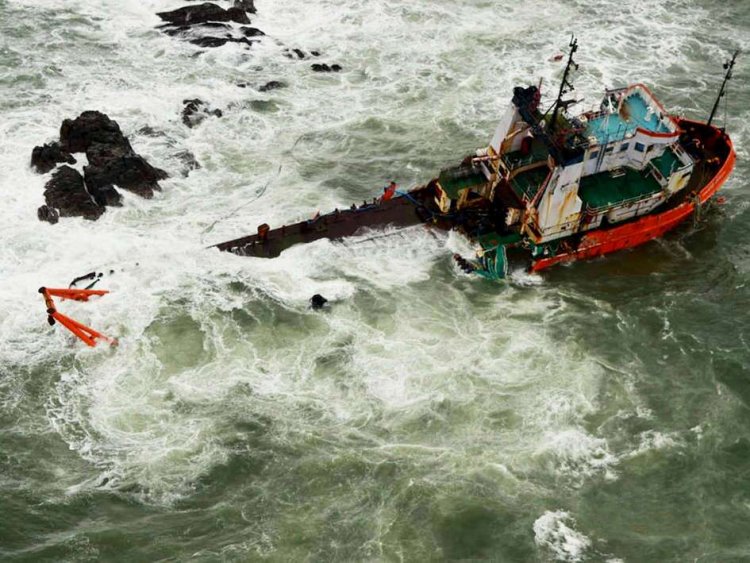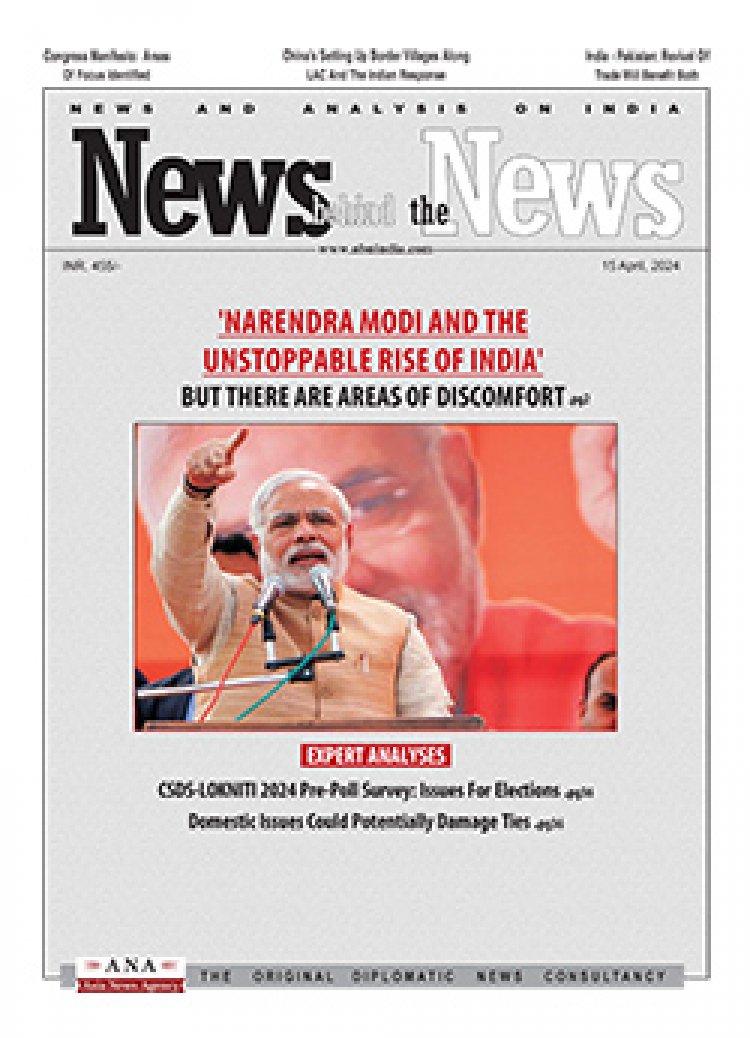IPPC Report on Climate Change: Grim Warning for India and the World
STORIES, ANALYSES, EXPERT VIEWS

A report released by the UN’s Intergovernmental Panel on Climate Change (IPPC) Monday, lends scientific credence to the warnings of the impending catastrophic global warming. Putting the spotlight harshly on the global policymakers, it underscores the need to implement plans aimed at limiting the rise in global warming to an ideal 1.5°C much sooner than earlier envisaged. Given that most nations are way behind in meeting the earlier target, the new shorter deadline entails a zero-tolerance approach to anything coming in the way of attaining net zero carbon emissions.
The IPPC warns the already noticeable effects of warming could become harsher as a result — rainfall could become more unpredictable, heat waves more scorching and droughts more taxing. The threshold of 2 degrees Celsius, the more conservative determinant for several Paris Climate Change Pact goals and critical to check cataclysmic weather events, is likely to be passed by 2060 in the business-as-usual scenario — decades earlier than that predicted by the IPCC scientists in 2018. The report does, however, leave a small window of opportunity to take corrective measures. Its hypothesis that “aggressive emission cuts beginning now could reduce warming after 2050”, may set the tone for climate diplomacy in the coming months and years.
At present, the going is downhill as far as meeting the Paris Agreement goals is concerned: while fossil fuel production and use should be reduced by about
6 per cent a year through 2030, the planet is dangerously headed the opposite way, towards an average annual increase of 2 per cent.
An urgent reversal of this trend — that bodes disastrous consequences — by drastically cutting emissions of CO2 and greenhouse gases can help prevent the outbreak of the more widespread, frequent and intense weather events predicted by the IPCC. Coming a couple of months before the critical COP26 summit, the report should goad all nations to resolve to meet in Glasgow with strengthened and unified climate change strategies.
Net-zero commitments: India’s reservations
The crucial aspect in climate control is for countries to have a target of net-zero emissions. Commitments to this have been announced by more than 100 countries. Net-zero is a state in which a country’s emissions are compensated by absorption and removal of GHGs from the atmosphere through natural processes as well as futuristic technologies such as carbon capture and storage. It also requires phasing out fossil fuel-based energy. Developed countries expect India to do more heavy lifting on this count. India regards the emphasis on net-zero as a deviation from the landmark pact’s architecture.
India has argued that any commitment to net-zero would mean compromising developmental goals of countries with a far shorter legacy of emissions compared to the developed world. Delhi has pointed to the developed countries’ poor track record with respect to fulfilling their technology transfer and financial-aid commitments to developing countries. At the same time, the small window of opportunity to make the planet less hotter in 30 years would be lost if the world’s third largest emitter, i.e. India, is not on board in the carbon neutrality project.
India must act now: experts
According to experts, India must act now or else, the stronger effects of climate change will continue, environmental experts say, calling for the country to focus on a rapid reduction of greenhouse gas emissions and building resilient infrastructure to tackle the increasing impacts of extreme weather events.
Krishna Achuta Rao, one of the authors of the report, said the stronger effects of climate change will continue till the time the emissions are zeroed out.
Sharing a similar view, T S Panwar, Director, Climate Change and Energy Programme, World Wide Fund for Nature (WWF India), said "India is one of the most vulnerable countries to climate change and will be significantly impacted due to the increase in frequency and intensity of extreme weather events such as floods, cyclones, heat waves, forest fires and droughts.
Calling for strong and bold steps, Avinash Chanchal, Senior Climate Campaigner, Greenpeace India, said the country needs to take urgent measures to limit temperature rise below 1.5 degrees Celsius and move away from any future investment into fossil fuels. "We are already witnessing these events at regular intervals. This human-made climate change is not only impacting nature and our biodiversity, but it has a huge impact on human health and the economy as well. The coastal areas are already dealing with the effects of sea-level rise, which will only increase if we fail to solve the problem of increasing temperatures," he said, adding that governments and big corporations must shift to cheaper and cleaner energy sources.
"As far as India is concerned, we have a double burden now. We have to build resilience in our economy, infrastructure and social systems to deal with the increasing impacts of extreme weather events. At the same time, we have to act on mitigation measures," said Chandra Bhushan, president and CEO, International Forum for Environment, Sustainability and Technology (iFOREST).
The climate experts stressed that the timelines in the latest IPCC report are more definitive as it has projected that the global temperature is expected to reach or exceed 1.5 degrees Celsius of warming by 2040, which renews the urgency for collective climate action.
"Previously, IPPC's special report in 2018 had projected that global warming is likely to reach 1.5 degrees Celsius between 2030 and 2052. The timelines have now been made more definitive, with the new IPCC assessment finding that the global temperature is expected to reach or exceed 1.5 degrees Celsius of warming by 2040.
"Importantly, the scientific evidence in the report unequivocally finds human influence to have warmed the atmosphere, ocean and land. These estimates renew the urgency for collective climate action ahead of the COP26 scheduled for November, as close to 1.5 degrees Celsius or even 2 degrees Celsius will be beyond reach if countries fail to achieve immediate, rapid and large-scale reductions in greenhouse gas emissions," Bhushan said.
Indian agriculture and livelihoods threatened
Experts conclude that India must work on a war-footing to mitigate the dire consequences of the climate crisis that could push millions into poverty, and also lead to food insecurity and under-nutrition.
The IPCC report has highlighted the stark reality of global warming and its dire consequences — altered rainfall patterns, rising seas and temperatures, deadlier heat waves and glacial melts. The findings have serious implications for India and its political economy, particularly agriculture, which continues to be the largest source of livelihood.
India is already facing water stress, thanks to erratic monsoons, falling water table, and use of water-intensive hybrid seeds, and the rise in temperatures has made agriculture hungry for more resources such as water. According to an ongoing study of the Indian Council of Agricultural Research, farming now consumes over 30% more water due to “high evaporative demand and crop duration due to forced maturity”. This will intensify. Increased temperatures and extreme rainfall can also affect soil fertility, increase incidence of pest infestation, and also impact allied sectors such as animal husbandry and fisheries. Higher temperatures also hamper productivity for outdoor workers such as farmers and labourers. The 2017-18 Economic Survey found that the climate crisis could cut farm incomes by up to 15% to 18%, and up to 20% in areas without irrigation. Nearly 60% of India’s net sown area isn’t irrigated.
India must therefore, work on a war-footing to mitigate the dire consequences of the climate crisis that could push millions into poverty, and also lead to food insecurity and under-nutrition. According to an Observer Research Foundation study, India must step up public investment in development and dissemination of crop varieties that are more tolerant of temperature and precipitation fluctuations, and are more water- and nutrient-efficient. Agricultural policy should focus on improving crop productivity, water management, and developing safety nets for farmers to cope with the risks of the climate crisis.
Science, politics and economy
Arunabha Ghosh (public policy professional, adviser, author, columnist and Chief Executive Officer · Council on Energy, Environment and Water) seeks to “understand what the science says, what the politics delivers, and what the economy demands.
“Globally, average surface temperatures have already risen by 1.09°C between 1850 and 1900, and 2010 and 2019…... What happens next depends on our development and technological choices.”
The IPCC document, emphasises Ghosh “explores several scenarios based on shared socioeconomic pathways and different levels of radiative forcing (or the change in the energy balance in the atmosphere due to natural or human causes). If we followed high fossil fuel development (doubling emissions by 2050), temperatures would rise by 4.4°C (range of 3.3-5.7°C) by 2100. If a more sustainable pathway were pursued (with net-zero emissions by 2060 and negative emissions thereafter), average global temperature rise would be 1.4°C (range of 1.0-1.8°C).
“Regardless, it is likely that average rise in temperatures will breach the 1.5°C barrier within the next two decades. If emissions are not mitigated rapidly, we are staring at rising climate risks and catastrophic impacts.”
IPCC scenarios
The IPCC says that in order to stabilise rise in temperatures, two things have to happen: Anthropogenic emissions must become net-zero and, in the interim, cumulative emissions cannot exceed a global carbon budget. To stay within the 1.5°C limit, starting in 2020, the remaining global carbon budget is 300-500 gigatonnes of carbon dioxide (GtCO2) (with a likelihood of 50 per cent-83 per cent). But who will cut their emissions, asks Ghosh.
“Of late, several large emitters have promised net-zero emission targets. But China and the United States have already emitted 129 GtCO2 and 344 GtCO2, respectively, between 1990 and 2010. CEEW analysts calculate that despite their self-laudatory targets, China would consume 87 per cent of the global carbon space (if it reached net-zero in 2060) and the US would eat up 26 per cent (if it reached net-zero in 2050). Clearly, mere announcements of net-zero targets do little to retard the ‘carbon grab’ of the largest emitters……”
India must adopt a more climate-friendly development pathway
India, says Ghosh “is particularly vulnerable. If warming exceeds 4°C, India could see about 40 per cent increase in precipitation annually, leading to extreme rainfall events……. three-quarters of India’s districts are now hotspots of extreme weather events. Since 1990, more than 300 such events have resulted in damages exceeding Rs 5.6 lakh crore.”
India, argues Ghosh “must adopt a more climate-friendly development pathway for its own sake. Its per capita incomes, energy consumption and carbon footprint are well below the global average but it must deliver high rates of economic growth within a shrinking carbon budget.
“India has an energy revolution underway. This ranges from household electrification to smart meters, scaling up solar and wind to new ambitions in biofuels and hydrogen, energy efficiency to clean cooking for millions, electrification of railways to electric vehicles, being the first country with a cooling action plan to skilling thousands in green jobs.
“Next, the discourse must shift from energy to the economy. There are very few sunrise sectors that are not low-carbon. India must tap new technology frontiers (green hydrogen), new business models (distributed and digitalised services, for distributed energy, EV charging, cold chains), new construction materials (low-carbon cement, recycled plastic), new opportunities in the circular economy of minerals, municipal waste and agricultural residue, and new practices for sustainable agriculture and food systems. Many of these technologies and business models are proven but need policy and regulatory support.”
















